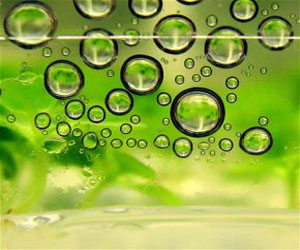 High oil prices and environmental and economic security concerns have triggered interest in using algae-derived oils as an alternative to fossil fuels. But growing algae on such a commercial scale would demand a lot of water.
High oil prices and environmental and economic security concerns have triggered interest in using algae-derived oils as an alternative to fossil fuels. But growing algae on such a commercial scale would demand a lot of water.However, a new study shows that being smart about where algae is grown can drastically reduce how much water is needed for algal biofuel. Growing algae for biofuel, while being water-wise, could also help meet congressionally mandated renewable fuel targets by replacing 17% of the nation's imported oil for transportation, according to a paper published in the journal Water Resources Research.
Researchers at the DOE's Pacific Northwest National Laboratory found that water use is much less if algae are grown in the U.S. regions that have the sunniest and most-humid climates—the Gulf Coast, the Southeastern Seaboard and the Great Lakes.
"Algae has been a hot topic of biofuel discussions recently, but no one has taken such a detailed look at how much America could make—and how much water and land it would require—until now," said lead author and a PNNL Hydrologist Mark Wigmosta. "This research provides the groundwork and initial estimates needed to better inform renewable energy decisions."
Algal biofuel can be made by extracting and refining the oils, called lipids, which algae produce as they grow. Policymakers and researchers are interested in developing biofuels because they can create fewer overall greenhouse gas emissions than fossil fuels. And biofuels can be made here in the United States. In 2009, slightly more than half of the petroleum consumed by the U.S. was from foreign oil.
Wigmosta and his co-authors provide the first in-depth assessment of America's algal biofuel potential given available land and water. The study also estimated how much water would need to be replaced due to evaporation over 30 years.

























































